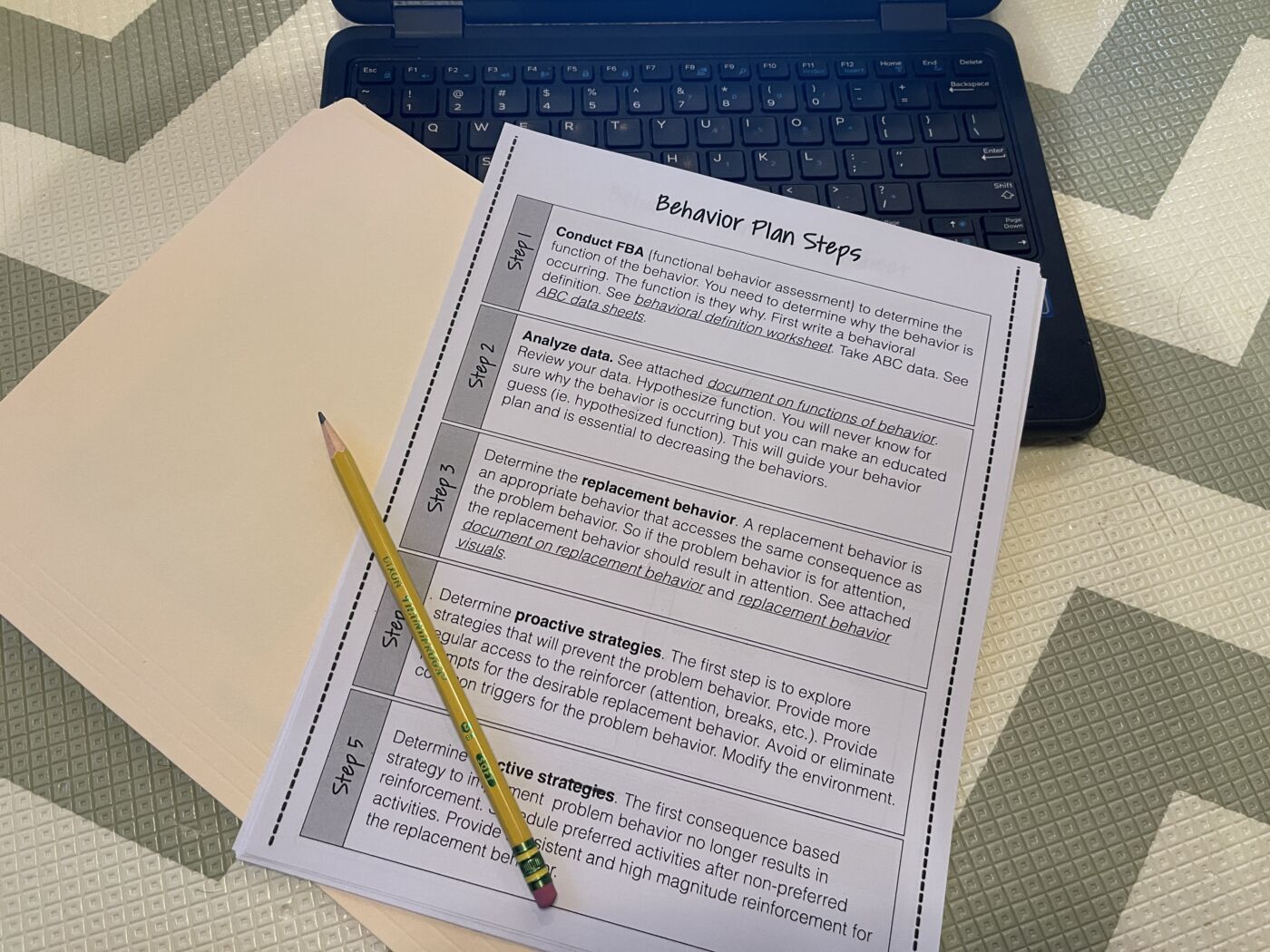Off a learner is off task, they can be demonstrating that behavior in many different ways. Off-task behavior can have the function of access, escape, attention, or a sensory need. Just like any other behavior, we start with our ABC data and meet as a team to analyze the data and hypothesize what the function of the behavior can be. When looking at the behavior we are concerned about, analyzing the data and meeting with the team about what skill the learner needs to replace the maladaptive or unwanted behavior is necessary. In this post, I will review some of the behaviors we may see as being off task as well as possible interventions to use. I believe that the special education classroom is dependent on teamwork, and teamwork with related service providers is no different. The same goes for general education classrooms for the success of our learners. When working with many educational professionals, it is important to be sure that there is rapport and a good working relationship with everyone. Especially in education, we spend most of our days with our professional teams! At the beginning of the year, and checking in throughout the school year, it is important to review team mission statements and teaching philosophies so that everyone is consistent with their teaching of the learners we share. With that being said, defining the behaviors that are expected and unexpected within our learners is important. This way the data and interventions are appropriate, accurate, and valid. Whether the team is creating an informal or formal behavior plan, implementing interventions, or starting strategies, the first step is always to review the function of the behavior. Taking data on the behavior across many days and settings on the antecedents, the behavior, and the consequences (ABC) will be the start. This data will then be reviewed by the team and a hypothesis of the function of the behavior will be created. Once the team has hypothesized why the behavior is happening, a replacement behavior will be determined. This is the behavior that the team wants to see in place of the behaviors they are concerned about. The last two steps are to create proactive strategies toward teaching the desired behavior and the reactive strategies. The reactive strategies will then be drafted and these will be how the team will respond in times when the maladaptive behavior occurs. This post will show some proactive strategies and interventions for off-task behavior. Off-task behavior can get frustrating for everyone involved, and these behaviors may trickle down to other learners who may not have the same function but could be imitating peers. In that case, we have to structure our interventions for that learner and teach them how to decrease the attention and imitation of their peers who may need extra support. Putting proactive strategies in place is a positive move for the classroom environment as a whole, the educational staff working in the classroom, and the learners as individuals. When the team is reviewing the ABC data and drafting the interventions for the learner as an individual, the peers in the classroom should also be included. One of the most important practices that we put in place is using proactive strategies and decreasing the number of times we use reactive strategies. Some of the proactive strategies we put in place as a team for independent learners as well as learners within the whole classroom are: Use reminders. Give learners breaks before the maladaptive behaviors Gain attention prior to delivering instructions. Some learners may require direct eye contact. Seat the learner in close proximity of the adult leading the instruction Give clear and concise directions Give opportunities for choice-making Positive reinforcement when the learner is on task Individual workspace or small groups Using visuals for center activities and tasks. Occasionally, we find out that the data shows that the interventions and strategies that we have in place are not decreasing the unwanted behavior. If your data indicates no progress after a few weeks of implementation and consistency, you may consider moving to tier 2 interventions Tier 2 intervention options may look like: Behavior contract Behavior contingency maps Behavior Intervention Plan (BIP) Structured Breaks Check In Check Out (CICO) Daily behavior form or home-logs Functional Behavior Assessment (FBA) Individual & Visual Schedules Reward or token economy Sensory diet Social Stories Focus teaching on executive functioning, conflict resolution, social skills, calm-down skills Please let me know if you have any questions of comments on off-task behavior. Collaboration is key! Data and Interventions for Off-Task Behavior – November 22, 2023 Discrete Trial Training in a General Education Setting – November 8, 2023 Accommodations Versus Modifications – October 25, 2023
This content was originally published here.
